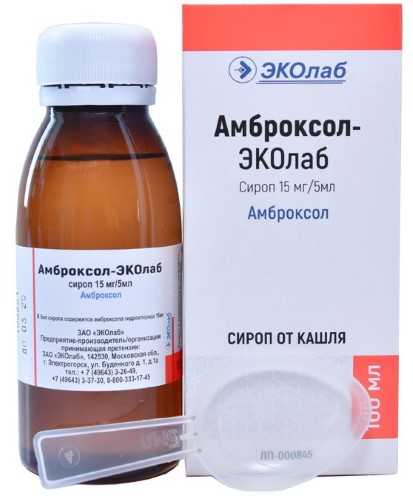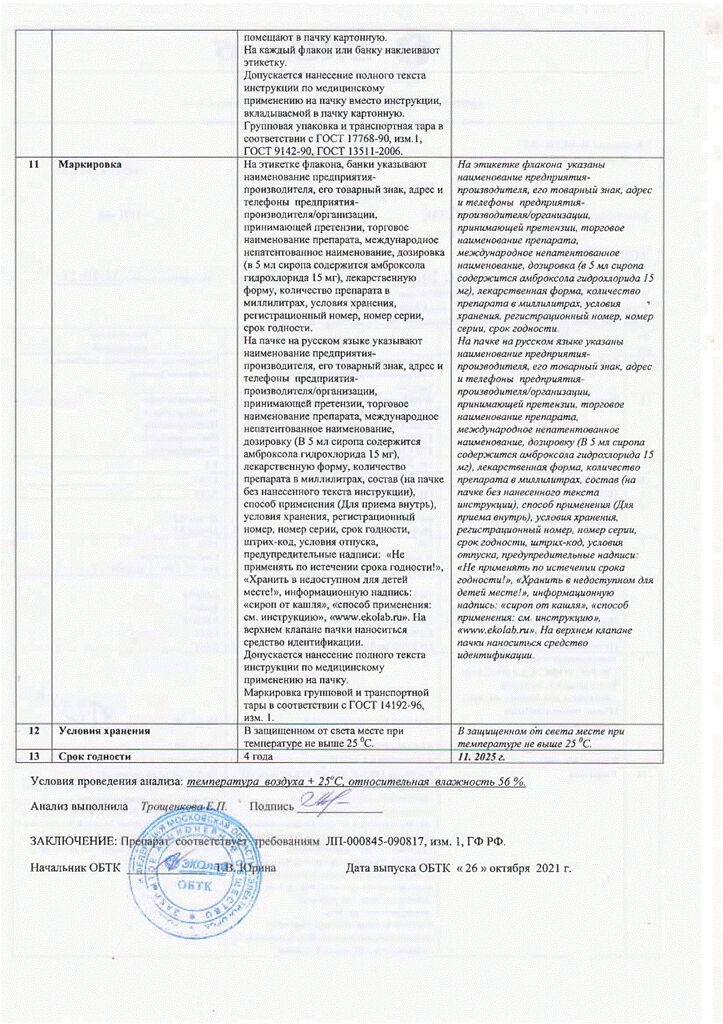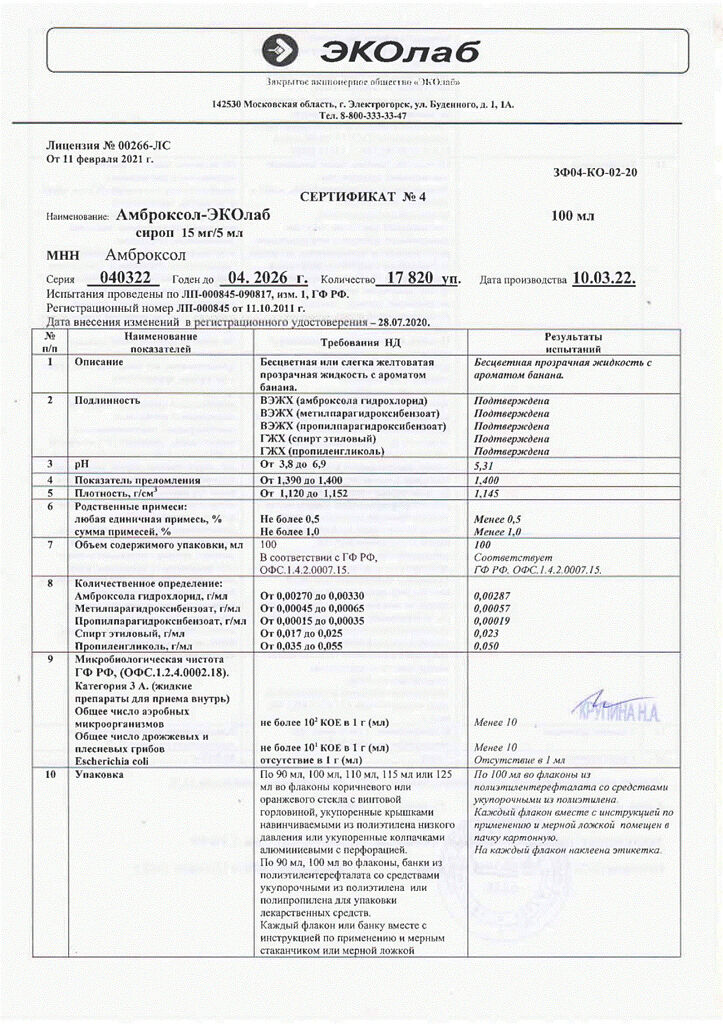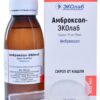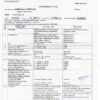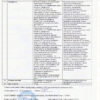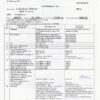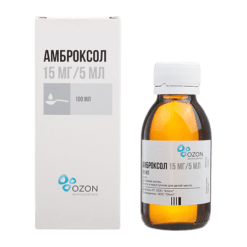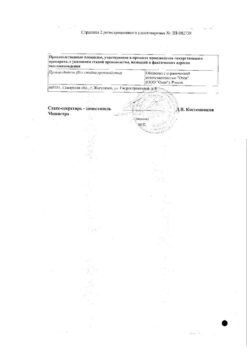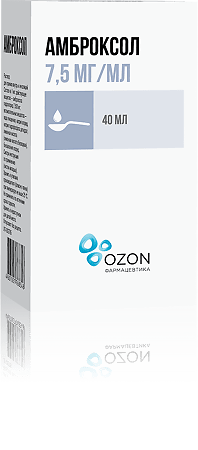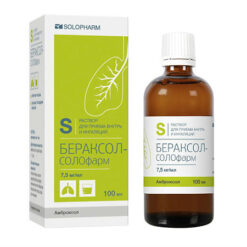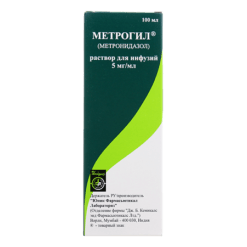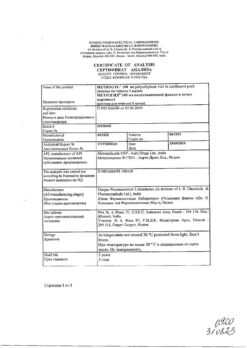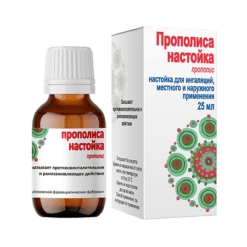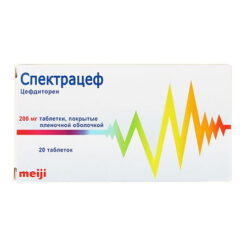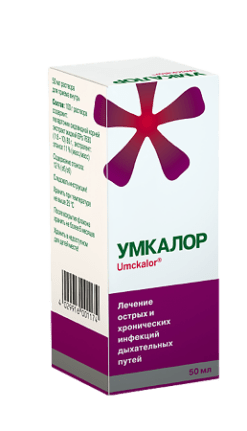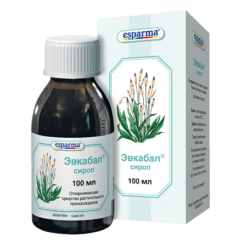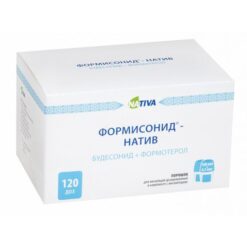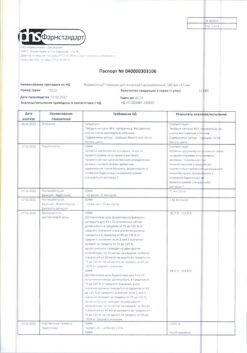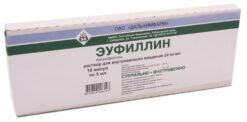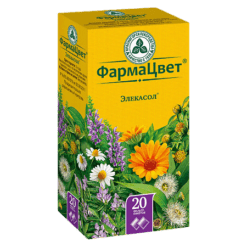No products in the cart.
Ambroxol, syrup 15 mg/5 ml 100 ml
€1.92 €1.75
Description
Tracheitis, Respiratory tract infections, Lung inflammation (pneumonia), Bronchitis, Chronic obstructive pulmonary disease, Bronchial asthma, Cough
Respiratory diseases with formation of viscous sputum: acute and chronic bronchitis, pneumonia, COPD, asthma with sputum retention, bronchiectatic disease.
Stimulation of prenatal lung maturation and treatment and prevention (at risk of preterm birth and at indicated artificial preterm birth between 28 and 34 weeks of pregnancy, if the clinical picture suggests prolongation of pregnancy by 3 days) of respiratory distress syndrome in premature infants and newborns.
Indications
Indications
Acute and chronic diseases of the respiratory tract with the release of viscous sputum:
acute and chronic bronchitis,
pneumonia,
chronic obstructive pulmonary disease,
bronchial asthma with difficulty in sputum discharge,
bronchiectasis.
Pharmacological effect
Pharmacological effect
It has mucolytic, secretomotor, secretolytic and expectorant effects.
Pharmacodynamics
Ambroxol stimulates the prenatal development of the lungs (increases the synthesis and secretion of surfactant and blocks its breakdown). Stimulates the serous cells of the glands of the bronchial mucosa, increases the content of mucous secretion and the release of surfactant in the alveoli and bronchi; normalizes the disturbed ratio of serous and mucous components of sputum. By activating hydrolyzing enzymes and enhancing the release of lysosomes from Clark cells, it reduces the viscosity of sputum. Increases the motor activity of the ciliated epithelium, increases mucociliary transport.
After oral administration, the effect occurs within 30 minutes and lasts for 6-12 hours.
Pharmacokinetics
Absorption is high (for any route of administration). Time to reach maximum concentration is 2 hours, binding to plasma proteins is 80%. Penetrates the blood-brain barrier, placental barrier, and is excreted in breast milk. Metabolism – in the liver, forms dibromoantranilic acid and glucuronic conjugates. T1/2 – 7-12 hours. Excreted by the kidneys: 90% in the form of water-soluble metabolites, unchanged – 5%. T1/2 increases with severe chronic renal failure, does not change with impaired liver function.
Special instructions
Special instructions
Due to the presence of ethanol in the composition, use with caution in patients with a tendency to develop drug dependence, liver disease, alcoholism, epilepsy, brain diseases, pregnant women and children.
Patients with diabetes can be prescribed in the form of syrup (5 ml of syrup contains sorbitol and saccharin in an amount corresponding to 0.18 XE).
In patients with bronchial asthma, cough may increase. Should not be taken immediately before bed.
In patients with severe skin lesions – Stevens-Johnson syndrome, Lyell’s syndrome – fever, body pain, rhinitis, cough and sore throat may appear in the early phase. During symptomatic treatment, it is possible to erroneously prescribe mucolytic drugs such as ambroxol. There are isolated reports of the identification of Steven-Johnson syndrome and Lyell’s syndrome, which coincided with the administration of ambroxol ECOlab; however, there is no causal relationship with ambroxol. If the above syndromes develop, it is recommended to stop treatment and immediately seek medical help.
If kidney function is impaired, use only as directed by a physician.
Active ingredient
Active ingredient
Ambroxol
Composition
Composition
Active ingredient
Ambroxol hydrochloride – 0.30 g/100 ml;
Excipients
Propylene glycol, ethanol (ethyl alcohol) 95%, sorbitol (sorbitol), methyl parahydroxybenzoate, propyl parahydroxybenzoate, banana flavor MA/1 139, purified water.
Pregnancy
Pregnancy
Ambroxol penetrates the placental barrier. It is not recommended to use during the first trimester of pregnancy. Extensive clinical experience with use after the 28th week of pregnancy has found no evidence of negative effects on the fetus. If it is necessary to use it in the II–III trimesters of pregnancy, the potential benefit to the mother should be assessed against the possible risk to the fetus.
During breastfeeding, the use of Ambroxol ECOlab is contraindicated, since ambroxol is excreted in breast milk. If it is necessary to use the drug, breastfeeding should be stopped.
Contraindications
Contraindications
Hypersensitivity to ambroxol or other components of the drug,
pregnancy (first trimester),
lactation period.
Ambroxol ECOlab syrup (15 mg/5 ml) contains 12.6 g of sorbitol based on the maximum recommended daily dose (30 ml). Patients with rare hereditary fructose intolerance should not take this drug.
With caution
Liver failure, renal failure, peptic ulcer of the stomach and duodenum, pregnancy (II–III trimester), impaired bronchial motor function and increased sputum production (with immotile cilia syndrome).
Due to the presence of ethanol in the composition, use with caution in patients with a tendency to develop drug dependence, liver disease, alcoholism, epilepsy, brain diseases, pregnant women and children.
Side Effects
Side Effects
The incidence of side effects is classified according to the instructions of the World Health Organization, characterized as: very often – at least 10%; often – not less than 1%, but less than 10%; infrequently – not less than 0.1%, but less than 1%; rarely – not less than 0.01%, but less than 0.1%; very rare, including isolated cases – less than 0.01%; frequency unknown (no frequency estimates available).
Immune system: rarely – itching, hypersensitivity reactions; unknown: anaphylactic reactions, including anaphylactic shock, angioedema.
Cardiovascular system: with long-term use in high doses: infrequently – intense headaches, decreased blood pressure, shortness of breath, hyperthermia, chills.
Nervous system: infrequently – dysgeusia (impaired sense of taste), rarely – headache.
Gastrointestinal tract: uncommon – decreased sensitivity in the mouth and pharynx, dyspepsia; rarely – diarrhea, dry mouth and respiratory tract, exanthema, rhinorrhea, constipation, dysuria. With long-term use in high doses: infrequently – gastralgia, nausea, vomiting.
Skin and subcutaneous tissues: rarely – skin rash, urticaria; unknown: severe skin lesions (including erythema multiforme, Stevens-Johnson syndrome (toxic epidermal necrolysis), Lyell’s syndrome, acute generalized exanthematous pustulosis.
Interaction
Interaction
Combined use with antitussive drugs leads to difficulty in sputum discharge while reducing cough.
Overdose
Overdose
Symptoms: nausea, vomiting, diarrhea, dyspepsia.
Treatment: artificial vomiting, gastric lavage in the first 1-2 hours after administration; intake of fat-containing foods, symptomatic therapy.
Storage conditions
Storage conditions
Store in a place protected from light, out of reach of children.
Storage temperature 2℃ to 25℃
Shelf life
Shelf life
4 years.
Do not use after expiration date.
Manufacturer
Manufacturer
EKOlab, Russia
Additional information
| Manufacturer | Ecolab, Russia |
|---|---|
| Medication form | syrup |
| Brand | Ecolab |
Other forms…
Related products
Buy Ambroxol, syrup 15 mg/5 ml 100 ml with delivery to USA, UK, Europe and over 120 other countries.

